In-depth: Is Soho over?
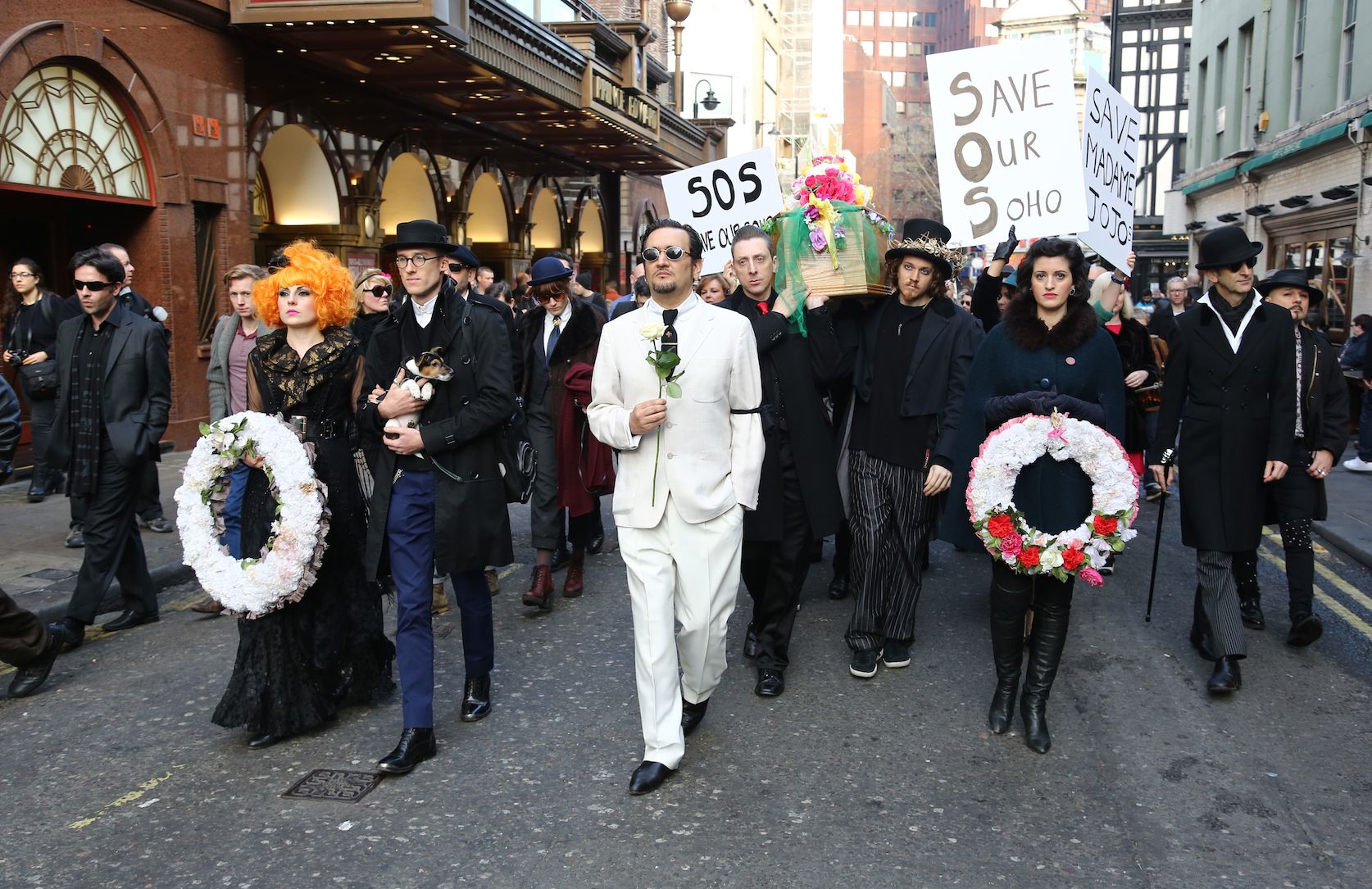
As more and more venues struggle to stay open, Soho regular Kalvin Ryder takes Attitude on a tour of the historic central London gay scene before the bulldozers move in…
Grubby and glitzy, Soho has been the centre of London’s gay scene for over 30 years.
From catwalking down the wonky and cracked Old Compton Street, receiving that knowing look from the bears and daddies smoking outside Comptons to clattering into Balans at 4am for breakfast after wild drinks at Heaven, it’s simply always been home. “Soho was a mythical place, for a gay Londoner going to Old Compton Street was a real rite of passage,” Dan Beaumont, co-owner of London’s uber trendy Dalston Superstore remembers.
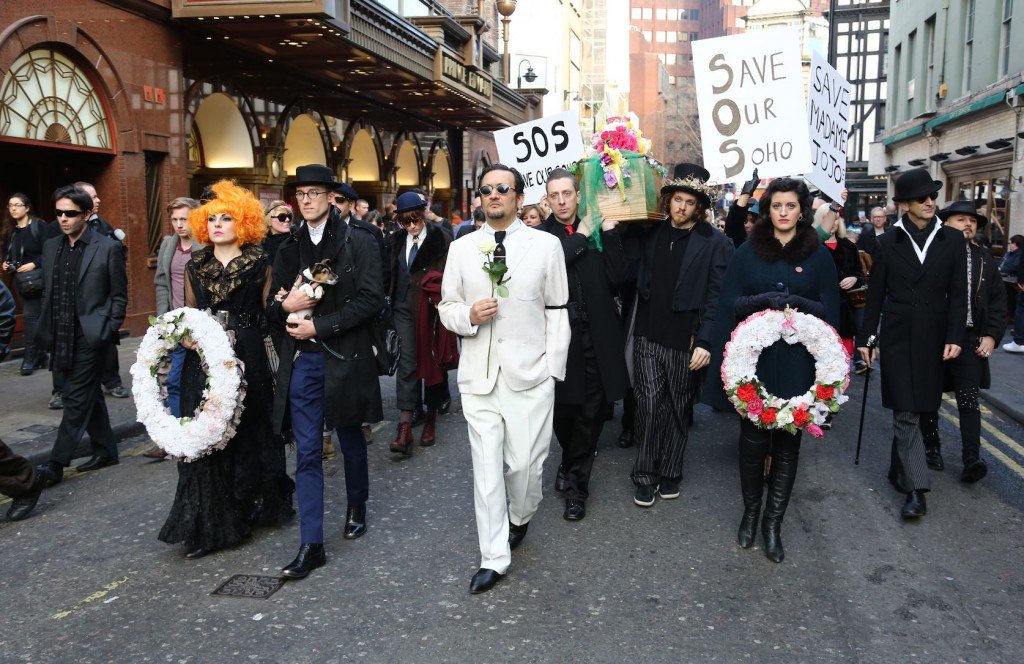
However, taking a walk around Soho today you may liken yourself to poor old Lola rocking up at the Copacabana. Coming in via Walkers Court, you’ll be disappointed. Gone are the tacky ‘Girls Girls Girls’ neon lights which lit up the affectionately named ‘Porno Alley’ to be replaced with boarded up windows, grim grey shutters and a ghastly retro coffee shop! Walking on to Brewer Street expecting to be bombarded by the fresh-out-of-college flyer boys pulling me into Escape, I’m greeted to nothing, those grey shutters ever-present and the rainbow neon lights spelling out Escape have had the plug pulled on them… Just like that. A little further on is the legendary Madam JoJo’s, which has played host to drag artistes such as Lily Savage, Regina Fong and even Katie Price! But now nothing. Over half a century of mischief and misdemeanours and game over, closed for business. Looking back on the closure of Madam JoJo’s, Queen of Soho Dusty O is very clear on how this will affect her beloved home, “It’s absolutely horrendous. You’re ripping out one of the main players that made the area special. It’s like ripping the heart out and expecting it to work in the same way. It won’t. It’s been destroyed for greed.”
Work will begin on demolishing and rebuilding Walkers Court and the sites where Escape & Madam JoJos were this year. Planning permission was put forward in September 2013 to regenerate the area into something more family-friendly, foodie and community-minded. Definitely not Soho’s style. These plans were submitted by Soho Estates and approved in December 2013. The biggest irony is Soho Estates is the company set up by the king of Soho, Paul Raymond. His famous Raymond Revue Strip Club opened in Walkers Court in 1958 and found a loop-hole in the law at that time of no nude dancing by having his girls nude and posed on podiums which moved around the club – voila! – Britain’s first strip club was born. Now, Paul doesn’t sound like the kind of guy who would swap sleaze for soya milk, does he? Alas, he passed away in 2008 and left his £650m business to granddaughters Fawn & India Rose. Their plans to gentrify the area include luxury flats with a helipad, plus a theatre that will seat 150 people and could be used, as Fawn suggests, for “things at lunchtime, that schools could use, then a play at 7:30 and cabaret afterwards.”
For the community of Soho, it is a very raw topic. “They’ve sold out to his memory, his legacy, and his family should be ashamed of themselves for allowing this to happen,” says Dusty O. Lady Lloyd not only works in Soho, but is also one of its residents. “I moved to Soho when I was 17 and I’ve lived there ever since until eight months ago when I had to leave due to the planned works,” she says. “My flat was above Soho Books on Brewer Street. My old flat is going to be the ones with the helipads on top. Life was really good fun and pretty full on. I was robbed about five times. It was kinda dangerous, kinda fun. I was friends with all the prostitutes and all the girls I knew loved it. They loved the money, the atmosphere and the nightlife. They’d come up for cups of tea and we’d chit-chat out of the windows. It was Soho! Now I’m not there it’s a bit lonely. It’s boring.”
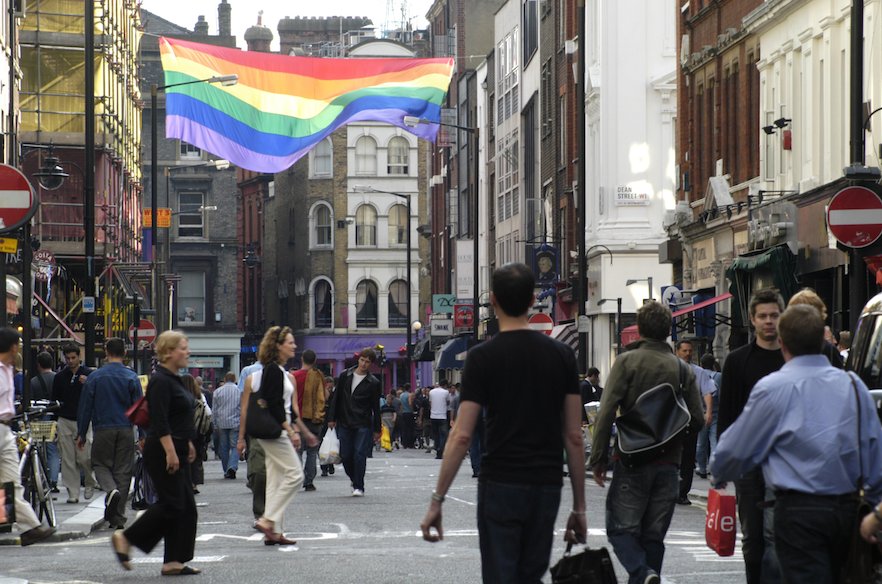
As we descend onto Rupert Street, we waltz into The Yard. With its statues, fairy lights and perfect courtyard, this is the place for a drink on a summer’s eve with the buffest barmen in the area and a place to sit and smoke. But no sooner have I sat down for a drink do I notice the posters declaring “#SaveTheYard.” Yes, The Yard is facing the same fate as the other bars up the road. Westminster have been presented with an application to have the courtyard covered over with a glass canopy. Why oh why would anyone want to do this? It is the best courtyard in Soho. Apparently, three flats are to be built on the stable roofs. More luxury flats that we don’t need, to join the ones with the helipads in porno alley.
Dan Beaumont feels the spaces in Soho need to be fought for. “It’s hard for people to reconcile that there might be people who want to run an underground club night in somewhere which should be prime real estate,” he says. “It’s a lot of powerful pressure to try and stand against.”
With the planned brutality of modern re-development, is this the end of Soho? Looking down this bustling beloved street, it almost feels like it is already losing its relevance to gay men: Would Manchester allow a Muriel’s Kitchen to open on Canal Street, or a Nando’s plonked near New Union? Hell, Manchester doesn’t even allow cars down their beautiful tree-lined street. The care and attention to Manchester’s gay scene is staggering when you consider the taxis and rickshaws hurtling down Old Compton Street day and night.
Bustling further down Old Compton Street, dodging those bloody rickshaws, and the Admiral Duncan is packed. Just seeing the Admiral Duncan standing reminds you that Soho has overcome a lot worse than its current situation. The nail bomb of April 1999 resulted in the deaths of three people and injured many more. It gripped the country and, in true Soho style, saw Boy George take to the balcony of the venue nine weeks later to address the thousands who lined up in Old Compton Street with a bold ‘Don’t let the bastards get you down’ speech. With a new millennium approaching, the Soho community had never been so together, and being gay was, for the first time, cool.
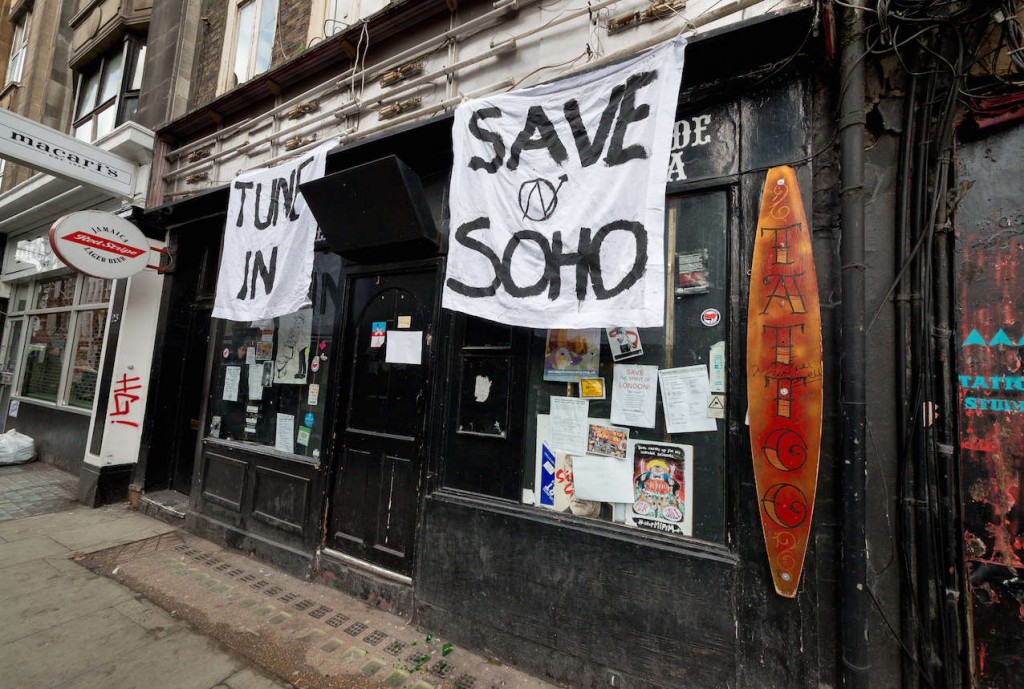
Dusty O remembers. “From the mid-90s it was really kicking. I remember everything on Old Compton Street had some gay leaning,” he says. “You had the gay cab company, Balans was just a sandwich shop and after Bang! we’d go to the basement of some sex shop which had a funny little club, all illegal but great fun! There was all sorts down there.”
At the turn of the millennium Soho had never been so relevant. A hot bed of activity, parties, and a melting pot of different scenes. You could get off your head with the Muscle Marys at Mantos then on to Heaven, or twink it up at Ku Bar on Charing Cross Road and over to G-A-Y at the Astoria. Hipsters could swig their cans of red stripe at Retro Bar or Trash Palace ready for Wig Out at Ghetto, or you could keep it classy with drinks at Friendly Society and wave your membership card into a booth at Shadow Lounge. There was an undeniable buzz.
All sorts of characters from the gay scene today agree that this era of Soho was its golden age. “There was a really healthy cross pollination, you would have lots of people bouncing between different scenes and lots of different music,” Dan Beaumont remembers. “You would be meeting people from all different walks of life.”
“I was 14 when I first went to the Astoria and had a really good fake ID,” recalls Dusty O. “I’d start off at the Ku Bar on Charing Cross Road and then on to Astoria. Everyone would be out on the street. I remember everyone outside this one chip shop nearby. It was amazing!”
Lady Lloyd remembers the great men behind the amazing gay scene of the 90s and noughties well. “Those days were amazing,” she says. “I was at Ghetto running ‘Don’t Call Me Babe’ on a Tuesday and I was a Saturday night DJ at G-A-Y. Simon Hobart who owned Ghetto and Jeremy Joseph who owns G-A-Y were like chalk and cheese, but both geniuses in their own way.” However with time, comes change.
As I saunter up Soho’s Greek Street, I am greeted with one of Soho’s most recent relevant success. Hallelujah for Room Service at Miabella. Every Thursday you’ll be queuing down the street for a hedonistic mix of fashion, high-end porn stars and house: Something to get excited about, which may ease the blow of another gay bar closing down just a few struts up from there. The Green Carnation is soon to close for redevelopment. Into what? God only knows. But it will be joining its sisters on the opposite end of Old Compton Street as another boarded up beauty.
On to the iconic Soho Square and you can already hear the drilling and see the cranes in the distance. Walking up the Sutton Row and I’m stopped in my tracks. All access is blocked off and “Work in progress” signs galore. This is a demolition zone. It’s also the very site where The Astoria and Ghetto once stood, iconic venues, which firmly established gay Soho, demolished in 2009 after a compulsory sale to make way for the creation of London’s new Crossrail which will launch in 2019. It was the first nail in the coffin for Soho.
The Astoria was, of course, home of G-A-Y, the world’s most enduring and famous gay brand, filling the 2,000 capacity Astoria four nights a week! Revellers would pack out that Keith Moon bar, shimmying on the filthy, sticky carpets as Kylie’s Better The Devil You Know played in the huge main room on the strike of midnight. G-A-Y had been at The Astoria over 30 years, starting life as Bang!, a weekly night held in the Astoria’s basement. Once the 80s hit, and with the rise of Levis 501s, Italo House and the dominance
of Stock Aitken and Waterman, Bang!’s popularity hit new heights when it extended to two nights a week, however it was when
Soho icon Jeremy Joseph bought the rights to Bang! from the late Colin Peters in 1993 that things went stratospheric. Dusty O remembers: “That was a time when you could make some money from parties without spending hundreds and thousands of pounds promoting, which of course none of us could afford. We didn’t fly Madonna in, we had Hazell Dean playing 19 times. You’d see John Galliano and Alexander McQueen in those places.”
Bang! rebranded to G-A-Y with a music policy of current hits only. Jeremy set the task of getting big name pop acts to perform at the night, no mean feat, however Dannii Minogue took a chance and was the first big name to perform at the club and the only way was up from then. G-A-Y moved from the basement to the actual Astoria, doubled the amount of nights to four, and everyone from Kylie, Madonna, Mariah and the Spice Girls eventually played there. The brand exploded. G-A-Y bars opened on Old Compton Street and Manchester’s Canal Street, as well as G-A-Y Late in Soho, plus numerous compilation albums hit the market.
After the Astoria closed, G-A-Y took up residence at the equally infamous Heaven, a bold and seamless move which solidified and secured Soho’s gay pop scene.
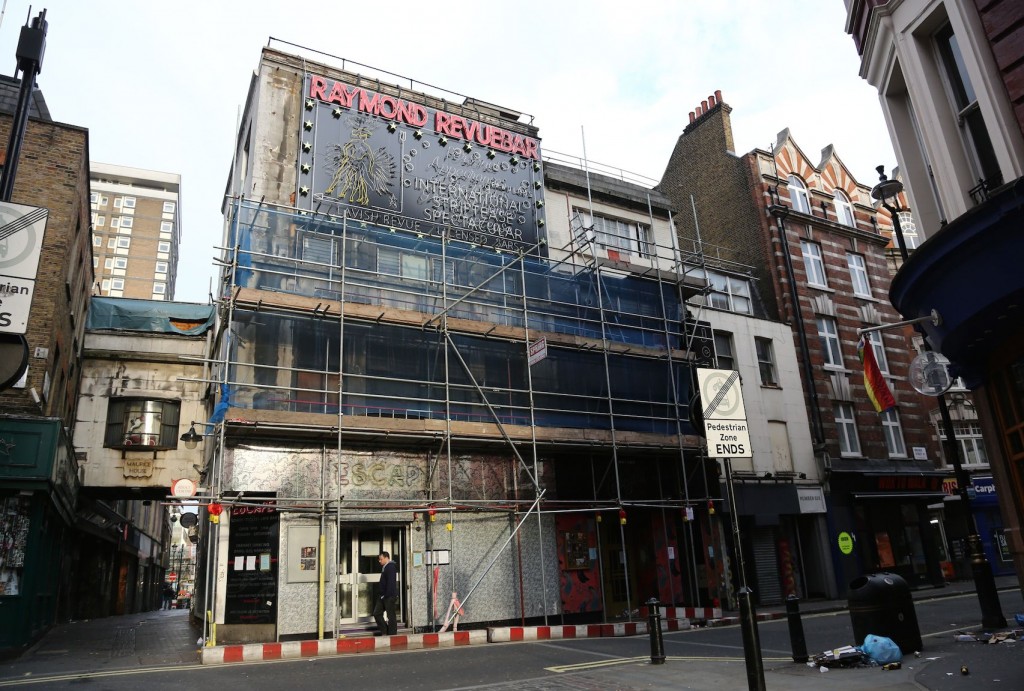
A sadder fate was in store for Soho’s gay alternative scene. Just behind The Astoria, nestled down Falconberg Court, was Ghetto, a basement club which played home to Soho’s hipster & alternative gay population. The antidote to G-A-Y’s camp, Ghetto, formally The Tube, with its blood red paint-peeling walls, sweat-drenched mirrors and mosh pit dance floor was where students mixed with celebrities. Nobody would bat an eyelid if Kate Moss was marching up to the bogs to check her lippy. Owned and run by the charismatic Simon Hobart, nights included the legendary indie disco Wig Out and electro-clash Nag Nag Nag. Simon was a master of keeping the alternative scene at the forefront of Soho’s gay scene and opened Trash Palace bar for pre-drinking in October 2004.
Just one year later, Simon tragically died outside his flat after returning home from Ghetto at just 41-years-old. With Simon’s death and the disappearance of Ghetto, the alternative scene in Soho all but disappeared, Trash Palace closed and his scene-changing Popstarz night closed for good in November 2014.
“Simon was a huge player in Soho. He was one of those people who, for a long time, moulded Soho and helped draw the colourful people there,” Dusty O mourns. “That hasn’t ever been replicated and it’s become more and more corporate and mainstream.”
It may be difficult to believe now, but Soho hasn’t always been central to London’s gay scene. Go back 30 years and Earls Court was the place to be. Go to Earls Court now and you’ll be partying at the till at Clone Zone, the only left over from a gay scene forgotten.
These days the gay scene is increasingly moving east. Dalston Superstore is a real landmark for gay clubbing, with a bar upstairs and a restaurant, low-fi art gallery and club downstairs. “Soho got very commercial, the sort of music you would hear wasn’t very exciting to me. It was dated,” says co-owner Dan Beaumont. “A big milestone was when Ghetto closed down. It was so central and played those alternative sounds. When we opened a gay bar in Dalston six years ago, people thought we were crazy opening one there. We got a great deal on somewhere, to do the same thing in Soho would have cost us many, many times more.”
The fabulously outrageous Sink The Pink club nights also rule over East London, with a brand new weekly Saturday Night, Savage, set to launch from the same team this month. “We were going to Boombox, Family and Nag Nag Nag, they were more creative nights but intimidating with a strict on-the-door guest list policy,” Sink The Pink’s host Glyn Fussell tells us. “We wanted something a bit more inclusive. We started Sink The Pink in The Green, and people loved it. Something was happening in East London, we lived here and moved the night there to Dalston Superstore at first, then Vogue Fabrics until we found Bethnal Green Working Mens club, which was the perfect fit. I found Soho had become a little dated. It’s not the centre point of the gay scene anymore. We’ve really noticed that with Sink The Pink, in the past two years people are coming from South or West London to us. There is a shift.”
Lady Lloyd disagrees and believes her beloved home will always be the heart of London’s gay scene: “I don’t think Soho will die out, I know everyone’s saying it’s going to be over. But it won’t be. The gay scene is just branching out into other areas as opposed to being in one secluded, hushed area.”
Another place that has continued to grow is Vauxhall. The harder, clubbier side of the gay scene has always had roots in Vauxhall but this area of South West London has grown stronger in the last decade. Aside from the super clubs, there is also the legendary Royal Vauxhall Tavern. Famed for its world-class cabaret, the RVT is a venue which has outlived them all. “It’s still fantastic. Thank God for the Royal Vauxhal Tavern!” smiles Dusty.
Who knows where the scene will be in another decade. The one thing we must fight for, gay or straight, is the Soho we know and love. Not the gentrified, white washed millionaires’ playground the gatekeepers of Soho seem intent on creating.
WORDS BY KALVIN RYDER
This feature originally appeared in Attitude’s April 2015 issue – you can still grab the issue from Pocketmags.co.uk/Attitude.
